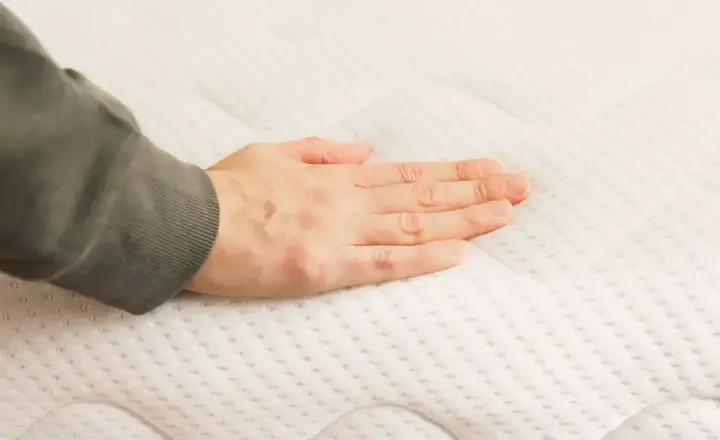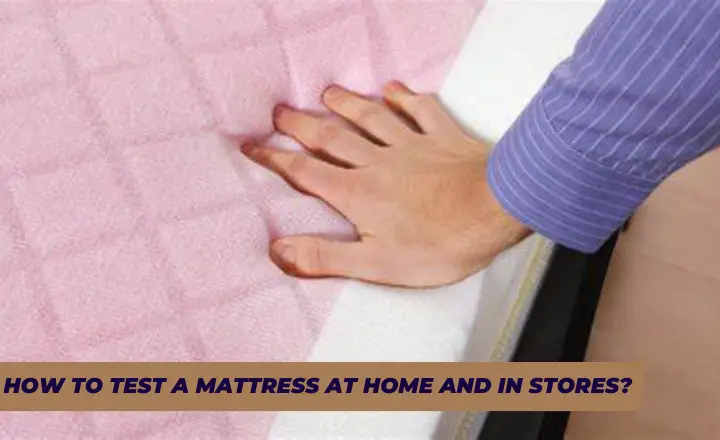Whether you’re in the market for a new mattress or want to ensure that your current one still provides optimal support and comfort, knowing how to test a mattress can make all the difference. With countless options available both online and in stores, it’s essential to be equipped with the knowledge to effectively evaluate a mattress before making a purchase.
We will explore the various methods for testing a mattress at home and in stores, empowering you to make an informed decision and ultimately achieve better sleep quality.
Pre-Test Tips for Mattress Testing:
It’s important to consider several factors in Mattress testing to make the right choice.
- Bring Your Pillow: Bringing your pillow to the mattress store can help you better gauge how comfortable the mattress will be.
- Know Your Mattress Preferences: Consider factors such as thickness of mattress firmness, material, and size that you prefer in a mattress before testing.
- Talk to Your Doctor: If you have any specific health concerns or conditions, it’s a good idea to consult your doctor before choosing a mattress to ensure it meets your needs.
- Test With a Friend: Bringing along a friend or family member when testing mattresses can provide valuable feedback and help you make a more informed decision.
- Wear Comfy Clothes: Dressing in comfortable clothing will allow you to move around and test out different mattresses more easily, giving you a better sense of how each one feels.
How to Test a Mattress In Store?
It’s important to take your time and try out different options.
Sit On The Bed Edge:
Start by sitting on the edge of the bed and bouncing a little to test its support and stability. This will give you an idea of how the mattress will hold up when getting in and out of bed.
Try propping your foot on your knee while sitting on the edge to check for balance and comfort. This will help you determine if the mattress edge is suitable for sitting in your bedroom without feeling unstable or uncomfortable.
Transition from Standing to Lying Down to Standing:
This process can give you a good sense of how comfortable and easy it is to use the mattress daily. Try lying down on the mattress and then getting up from the side of the bed.
Pay attention to how your body feels and whether the process feels natural and effortless. As you transition from standing to lying down and back up, note any pressure points or discomfort.
Try Your Favorite Sleeping Position:
Whether you’re a back, side, or stomach sleeper, lie on the mattress for a few minutes to see how it feels. Pay attention to the support and comfort level in that position to determine if the mattress fits your needs.
Wait 5-10 Minutes:
Take your time, and don’t rush it. Spend 5-10 minutes lying on each mattress to feel its comfort. This will allow you to see any pressure points or if the mattress traps heat, which can be a deal-breaker for some people.
Snuggle Your Partner:
One fun way to do this is by snuggling with your partner if they’re with you. Try lying side by side, getting up and lying down, and even give the mattress a little snuggle to see how it feels.
It’s all about finding that balance between comfort and support, so don’t be afraid to get cozy and see how the mattress responds.
Creak and Bounce:
You’ll want to see how the mattress responds when you apply different weights on one side, especially if you share your bed with a partner, kids, or pets.
Consider how much disturbance it might cause during the night and whether it could affect your sleep quality or that of others in the bed.
Ask Your Mattress Expert:
Ask the store’s mattress expert about the materials used in the mattress, such as memory foam, latex, or innerspring coils.
Understanding these materials can help you determine which type of mattress best suits your sleeping preferences. Don’t be afraid to ask about warranty and return policies to ensure peace of mind with your purchase.
How to Test a Mattress In Home?

When testing a mattress at home, it’s important to consider several factors to ensure you make the right choice.
Test Your Frame and Stack:
Ensure your bed frame or base is compatible with the mattress you’re testing. Some mattresses require specific types of support to perform optimally.
Stack the mattress with any existing layers or toppers you plan to use to simulate your typical sleeping environment. It will give you a better idea of how the mattress feels and performs in real-life conditions.
Bed Edge and Transition Test:
Sit on the edge of the mattress and assess its support and stability. Pay attention to how much it sinks and whether it provides adequate support for sitting.
Try transitioning from standing to lying on the mattress to gauge its comfort and ease of movement.
TV or Radio In Your Favorite Sleeping Position:
Start by lying down on the mattress in your favorite sleeping position. Spend 10-15 minutes in this position to see how comfortable and supportive the mattress feels. Pay attention to any pressure points or discomfort.
Another way to test a mattress is to listen to TV or radio while lying on the mattress. It can help you assess how much motion transfer there is and whether the mattress absorbs sound well. Pay attention to any disturbance or noise as you move around on the mattress.
Monitor for Heat Trapping:
You can start using your favorite sheets and monitor how well the mattress retains heat. Pay attention to whether you feel excessively warm or the sheets become hot at night. It will give you an indication of how well the mattress regulates temperature.
Test With Your Favorite Sheets:
The test for heat-trapping is to observe how breathable the mattress is. Look for materials that promote airflow and ventilation, such as open-cell foam or latex.
These materials can help prevent heat from getting trapped in the mattress, leading to a more comfortable sleep experience.
You can follow all the steps and be satisfied, then you buy.
Is it Necessary to Test a Mattress?
Yes, it is necessary to test a mattress before purchasing it. Testing a mattress allows you to assess its comfort, support, and overall suitability.
By lying on the mattress and testing different sleeping positions, you can determine whether it provides the right level of firmness and pressure relief for your body.
Ending:
Testing a mattress at home and in stores is essential for making an informed purchasing decision. By following the steps outlined in How to Test a Mattress At Home and In Stores, you can choose a mattress that meets your comfort and support needs.
Consider factors such as firmness, materials, and durability when testing mattresses. Whether you’re trying a mattress at home or in a store, take your time to evaluate its suitability for your sleep preferences. With these testing methods, you’ll be better equipped to find the perfect mattress for a good night’s sleep.


